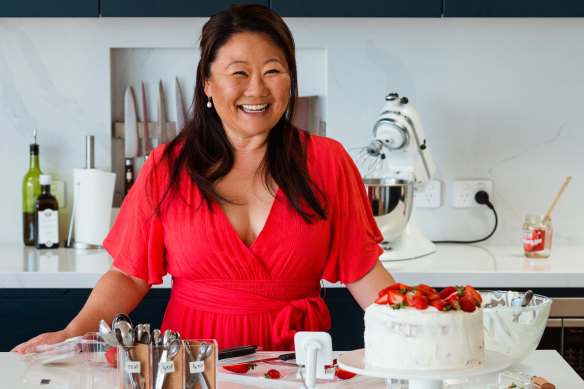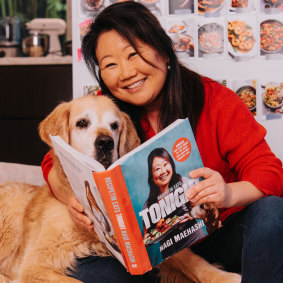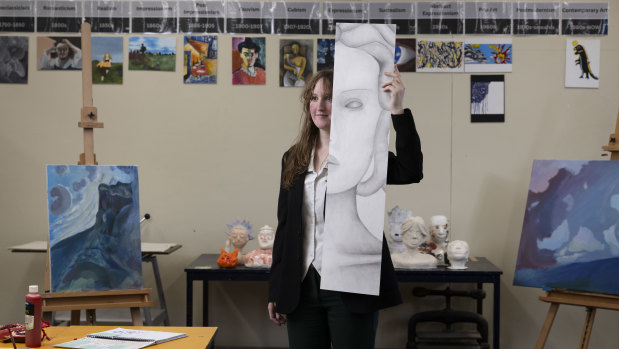Creative spin: Drama kid’s film makes global mark
Sydney Grammar graduate Harvey Abrahams always had a passion for the creative arts - long before his major work for HSC Drama was selected for the OnStage showcase.
“I’ve always been creative, enjoying music and drama with my siblings,” he said.

Harvey Abrahams says he wants to venture into the world of visual effects, directing and producing.
Since graduating, Abrahams has gathered accolades and awards for his major work – a short film, Substratum, which blends his music and drama studies.
The film has been screened at more than 40 national and international film festivals, leading Abrahams to consider his advice for HSC Drama students.
“Although I didn’t get into NIDA, I’m thrilled to be attending AFTRS (Australian Film Television and Radio School) which is equally as exciting,” he said.
“I’ve always loved music, playing flute and jazz piano, but I have also been a drama kid – so I decided to combine my two mediums into film.
“It takes a lot of work, but if you are passionate, it’s worth it.”
He stressed the importance of immersing yourself in artistic endeavours beyond the curriculum, to home-in on analytical skills and draw inspiration.
“Enjoying drama allows you to have both an entertaining experience and a learning opportunity. Whether attending a show or watching a film, you can explore so many aspects of your course like the characters within it,” Abrahams said.
Next, he seeks to push the boundaries of storytelling through film and music; to capture audiences worldwide.
“I’m hoping to venture into the world of visual effects, directing and producing,” Abrahams said. “The future looks very exciting.”
Abrahams’ tips for HSC Drama
Collaborate and brainstorm: “Ignite your creativity and bounce ideas off your friends and classmates. Be open to others’ ideas in the Group Project and don’t be scared to put your own forward”.
Mix pleasure with preparation: “Go out and see a movie and while you’re there, analyse the characters – put your knowledge to the test”.
Establish routines: “That way you know you are putting enough time into your subjects and enough time into life outside of studying”.
From corporate to cooking: Maehashi goes global
More than 4.6 million people follow her online, she had a stellar career in corporate finance and then turned a passion into a profitable business – so it would make sense to talk to Nagi Maehashi about her skill with numbers.
Maehashi went straight from high school into a coveted cadetship at PwC while completing a Bachelor of Commerce at the University of Technology Sydney.
But the founder of RecipeTin Eats, the food website visited by more than 15 million people every week, said her real motivation was born in the high school art studio.

Food blogger, cook, photographer, videographer and mastermind behind RecipeTin Eats, Nagi Maehashi in her home kitchen.Credit: James Brickwood
“Visual Arts is where I spent most of my time and effort and that’s where the passion was,” said Maehashi.
“I had a friend who was just as much into art as me, and we used to catch the first train at 5.30 in the morning just to get in early so we could work on our HSC works.
“My major work was actually a handmade wedding dress that turned into an installation. This happened just after my parents got divorced so I had some big hang-ups about being ‘trapped’ in a marriage. There was a bird painted on the train and the veil went over it like a birdcage. Thinking back now it was so blatant!”
Maehashi attended the academically selective North Sydney Girls High School but said her apparent lack of commitment was disappointing to her parents.

Nagi Maehashi with her RecipeTin Eats cookbook. Credit: James Brickwood
“It was disproportionate the amount of time I spent on art versus everything else,” she said.
Despite having a highly successful career, the former financial executive “took the plunge” and resigned.
“All I knew is that I’d been working really hard in corporate for 15 years. I just hit a turning point - I wanted to turn my experience into something for myself.”
Following her passion for home cooking, she spent time researching the market before launching RecipeTin Eats.
“What I’m doing has come about because I did my business plan, I did my due diligence. The fun part they see is 5 per cent of my life, the rest is gruelling work. If I did a pie chart of my day, you’d be shocked about the non-fun part.
“My work now is a very interesting mash-up of all the corporate experience I have and the Visual Arts I did back in high school.
“I do all my own photos and videos. All that training I had in high school gave me an eye – even shot composition – it’s something I developed in 3-unit art with Mrs O’Keefe!”
Maehashi’s tips for HSC students
Create artwork that resonates with you: “I didn’t realise it at the time but [my major work] was clearly an outlet for my parents getting divorced. I got a 94.9 ATAR and Art is one of the subjects I did best in.”
Get real about online business: “Don’t be fooled by what I do and think it’s all fun and games, just slapping a bit of makeup on and jumping in front of a camera. It really worries me those who think they can just become YouTube stars. Those kids who’ve done it seemingly by accident - they are one in 100 million.”
HSC marker advice: Visual Arts
Wendy Shearer, Head Teacher Visual Arts, Knox Grammar School

Wendy Shearer is the head teacher of Visual Arts at Knox Grammar School.
“I love teaching Visual Arts because it rewards innovation, creativity and autonomy. The subject offers students opportunities for personal expression, reflection and connection with the contemporary world around them. Students are assessed on their artmaking in the body of work and on their critical and historical understanding of art in the written exam.”
A marker’s top dos and don’ts
Body of Work
- Consider the technical and material refinement to make sure they link to your concept and the course content areas.
- Carefully document your processes and acknowledge all your sources in the Visual Arts Process Diary.
- Consult the syllabus and assessment and reporting documents regarding the practical exam and marking requirements such as exclusions, dimensions, guidelines for digital devices and files submission.

Visual Arts offers students opportunities for personal expression, reflection and connection with the world around them.Credit: Janie Barrett
Written exam
- Consider first completing the section of the paper that you are most confident with.
- Use the reading time to interpret the questions, read citations/extracts and select the most appropriate essay question.
- Examine all source material in Section I, then interpret and synthesise it in your response.
- In Section II, apply your learning from the Case Studies to the essay question, show a logical sequence and breadth of understanding.
Read our other HSC Study Guide 2024 stories
Check out Campus, our higher education hub, including an interactive course search tool